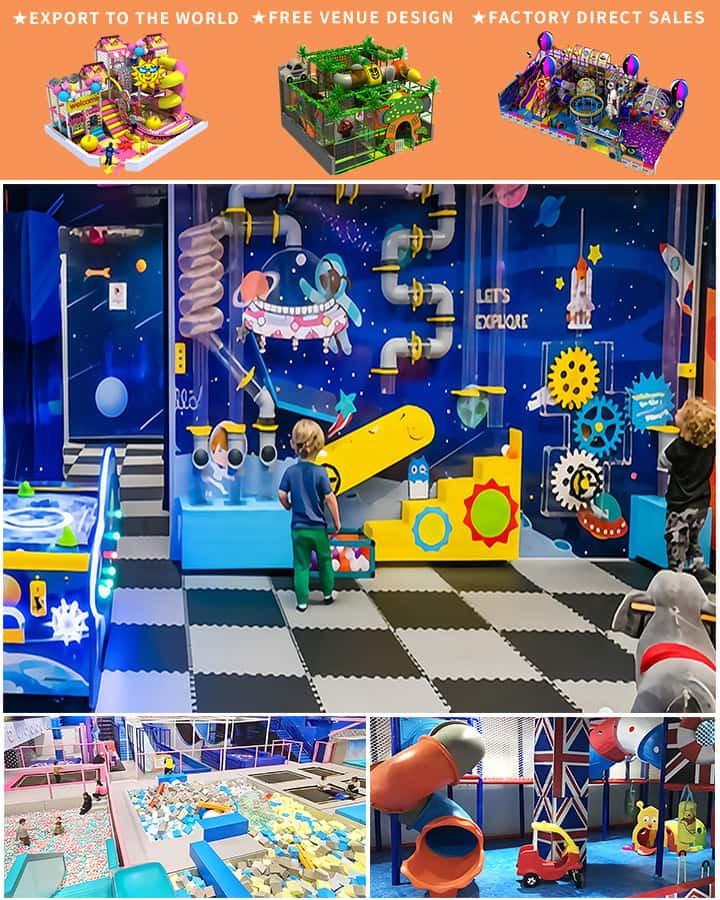When the weather outside is frightful or simply uncooperative, parents often seek alternative ways to keep their kids entertained and active. An indoor playground is the perfect solution, offering a safe and fun environment where children can run, jump, and explore to their heart’s content. This article will guide you through the essential steps to create an engaging indoor playground that will keep kids entertained for hours on end.
1. Choose the Right Location The first step in creating an indoor playground is choosing the right location. Whether it’s a spare room in your home, a basement remodel, or a rented space, ensure the area is large enough for the kind of activities you plan to include. Adequate ceiling height is also crucial, especially if you’re considering installing climbing structures or slides.
2. Safety First Safety should be your top priority when designing an indoor playground. Use non-toxic, durable materials for all play equipment. Ensure the flooring is soft but sturdy, using options like foam mats or rubber tiles to cushion falls. Make sure all edges are rounded to prevent injuries, and install safety gates around stairs or other potential hazard areas.
3. Types of Equipment An indoor playground should offer a variety of activities to cater to different interests and age groups. Consider incorporating:

- Climbing Structures: Small climbing walls or jungle gyms are great for developing motor skills and encouraging physical activity.
- Slides: A small slide adds excitement and helps build confidence as kids learn to navigate up and down.
- Trampolines: Mini trampolines are excellent for burning off energy and improving coordination.
- Interactive Toys: Including interactive elements like ball pits, obstacle courses, or sensory toys can keep kids engaged and stimulate their imaginations.
4. Age-Appropriate Fun It’s important to tailor the playground to suit the ages of the children who will be using it. For toddlers, consider soft play areas with gentle slopes and plenty of colorful balls. Preschoolers may enjoy simple climbing structures and tunnels, while older kids might appreciate more challenging obstacles and interactive games.
5. Themed Play Areas To make the indoor playground even more exciting, create themed play areas. Ideas could include a pirate ship with a climbing net, a princess castle with a slide, or an adventure jungle with tunnels and hidden treasures. These themes not only enhance the visual appeal but also spark creativity and imaginative play.
6. Maintenance and Hygiene Regular maintenance is key to keeping the indoor playground safe and hygienic. Vacuum the floors frequently, disinfect high-touch surfaces, and regularly check equipment for wear and tear. Encourage kids to wash their hands before and after playing to minimize the spread of germs.
7. Supervision and Rules Never leave children unattended in the indoor playground. Supervision ensures safety and provides an opportunity to mediate any conflicts that arise. Establishing clear rules for behavior, turn-taking, and equipment use will help create a harmonious environment where everyone can have fun responsibly.
Conclusion Building an indoor playground requires thoughtful planning and a focus on safety, but the result is an enjoyable and stimulating environment where kids can thrive. By considering the needs and interests of the children who will use it, you can create a space that encourages physical activity, social interaction, and creative play, regardless of the weather outside. So, gather your materials, get ready for some DIY action, and watch as your indoor playground becomes the go-to spot for endless fun and laughter!




